Advertisements
Advertisements
Question
Draw the perpendicular bisector of `overline"XY"` whose length is 10.3 cm.
- Take any point P on the bisector drawn. Examine whether PX = PY
-
If M is the midpoint of `overline"XY"`, what can you say about the lengths MX and XY?
Solution
- Draw a line segment `overline"XY"` of 10.3 cm.

- Taking point X as centre, draw a circle by using compasses. The radius of circle should be more than half the length of `overline"XY"`.
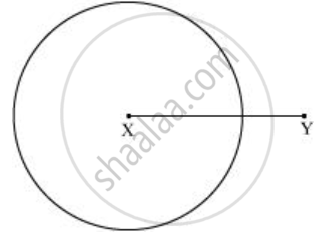
-
With the same radius as before, draw another circle using compasses while taking point Y as centre. Let it cut the previous circle at A and B.

- Join `overline"AB"`. `overline"AB"` is the axis of symmetry.
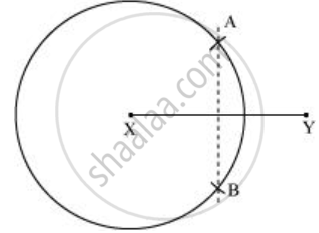
-
Take any point P on `overline"AB"`. We will find that the measures of the lengths of PX and PY are same.
It is because `overline"AB"` is the axis of symmetry. Hence, any point lying on `overline"AB"` will be at the same distance from both the ends of `overline"XY"`.
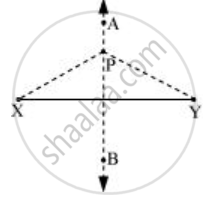
-
M is the mid-point of `overline"XY"`. Perpendicular bisector `overline"AB"` will be passing through point M. Hence, the length of `overline"XY"` is just double of `overline"MX"`.
Or 2MX = XY
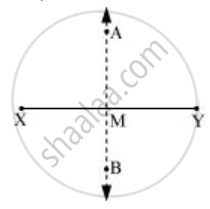
APPEARS IN
RELATED QUESTIONS
Draw a line segment AB of length 5.5 cm. Bisect it using a compass and ruler.
Draw a line segment of given length and construct a perpendicular bisector to line segment using scale and compass
7 cm
It is possible to draw two bisectors of a given angle.
Draw the images of points A and B in line l of figure and name them as A’ and B’, respectively. Measure AB and A’B’. Are they equal?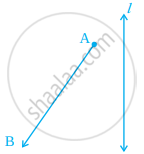
Draw a line segment of length 7 cm. Draw its perpendicular bisector, using ruler and compasses.
Copy figure on your notebook and draw a perpendicular from P to line m using (i) set squares (ii) protractor (iii) ruler and compass. How many such perpendicular are you able to draw?
Copy figure on your notebook and draw a perpendicular to l through P, using (i) set squares (ii) protractor (iii) ruler and compass. How many such perpendiculars are you able to draw?
Bisect a right angle, using ruler and compasses. Measure each part. Bisect each of these parts. What will be the measure of each of these parts?
Draw a line segment of length 12.8 cm. Using compasses, divide it into four equal parts. Verify by actual measurement.
Draw a circle of radius 4 cm. Draw any two of its chords. Construct the perpendicular bisectors of these chords. Where do they meet?
